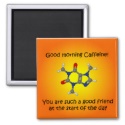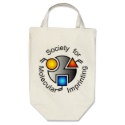|
|
Reference type: Journal
Authors: Rick J, Chou TC
Article Title: Imprinting unique motifs formed from protein-protein associations.
Publication date: 2005
Journal: Analytica Chimica Acta
Volume: 542
Issue: (1)
Page numbers: 26-31.
DOI: 10.1016/j.aca.2004.12.051
Alternative URL: http://www.sciencedirect.com/science/article/B6TF4-4F973C6-3/2/f34171756e9be9df1310d8584f439002
Abstract: Lysozyme and cytochrome c were imprinted in aqueous media, both as individual proteins and in combination, together with the functional monomer 3-aminophenylboronic acid (APBA) using ammonium persulphate as the initiator. The polymers were formed as films on the gold surfaces of quartz crystal microbalance (QCM) electrodes. It was shown that the lysozyme imprinted polymer was capable of selective template recognition. Micro-calorimetry measurements were used to determine the ratio of lysozyme and cytochrome c giving rise to the maximum enthalpy change when combined in the presence of the functional monomer. Using this procedure a maximum enthalpic change was found when the two proteins were present in an equimolar ratio. A polymer, formed by jointly imprinting the proteins in this ratio, exhibited minimal recognition for the individual template proteins, but was however able to recognise them in combination, suggesting that the proteins when imprinted together interact to form a 'new' imprintable motif.The introduction of a series of protein solutions, comprising the imprint proteins in various ratios, to the lysozyme/cytochrome c imprinted films, showed that the films exhibit maximum affinity towards the proteins when they are presented in approximately the same mole ratio (57% cytochrome c and 43% lysozyme) as was used to form the original imprint (equimolar ratio).Frequency response profiles of the QCM electrodes carrying the films, as a function of time, showed the establishment of a new stable baseline (-4.3 Hz) after the electrode was challenged with template protein (1.39 x 10-9 mol) in less than 3 min
Template and target information: protein, lysozyme, cytochrome c
Author keywords: protein, imprinting, thin film, aminophenylboronic acid, microcalorimetry, receptor, quartz crystal microbalance (QCM)
|


 Good morning caffeine magnet
Good morning caffeine magnet







 SMI logo grocery tote bag
SMI logo grocery tote bag







 SMI tie red
SMI tie red






